Hearing Aids
How do hearing aids work?
Simply stated, hearing aids pick up sound through a microphone, convert the sound into electrical energy, digitally process the sound, and then send it out into the ear through a speaker. The digital chips inside of the hearing aids work to convert and manipulate the sound to make the signal audible to the user. All hearing aids have a digital chip inside and a set algorithm, or prescription, to change the sound going into the ear. Simple models of hearing aids, often called amplifiers, only give a little bump in volume. This is often what you will find in Over the Counter hearing aids. Hearing aids that are fit by an audiologist have complex prescriptions that need to be set base upon the results from the person’s hearing evaluation and will be verified with Real Ear Measurement to make sure the hearing aid is delivering the sound needed for the individual’s hearing loss.
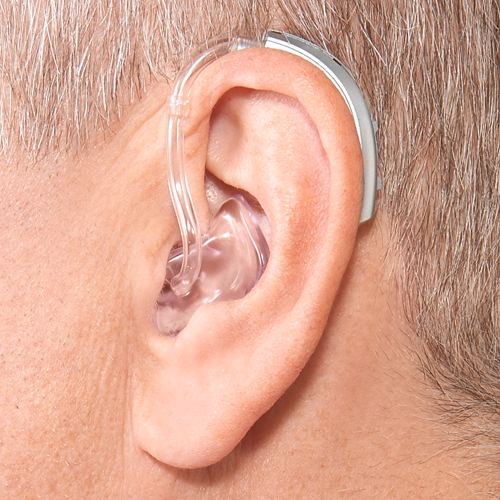
Completely in the canal (CIC)
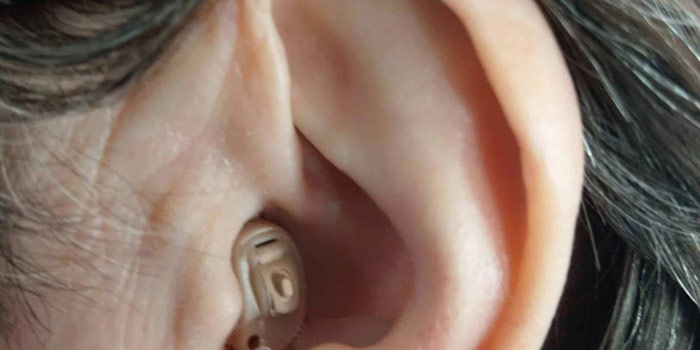
Different Styles of Hearing Aids
The most popular hearing aid today is a Receiver in the ear (RITE), or the Receiver in the Canal (RIC) style. This style has the body of the hearing aid behind the ear and then a thin wire that connects the receiver (or speaker) directly in the ear canal. The other style that is worn behind the ear is called a BTE (Behind the Ear). A BTE will almost always have a custom earmold that sits in the ear canal that is connected to the hearing aid by a tube. BTE hearing aids are typically larger in size than a RITE or a RIC hearing aid. Custom styles of hearing aids are built from impressions of an individual’s ear, and come in several different sizes. They range in size from very small, Invisible in the Canal (IIC) and Completely in the Canal (CIC), to larger, Half Shell, and In The Ear (ITE). The degree of hearing loss and the features the individual requires determines the size and type of hearing aid selected.
In the canal
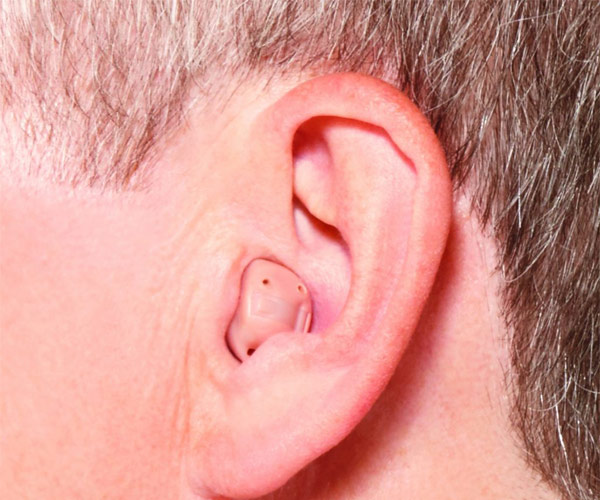
In the ear
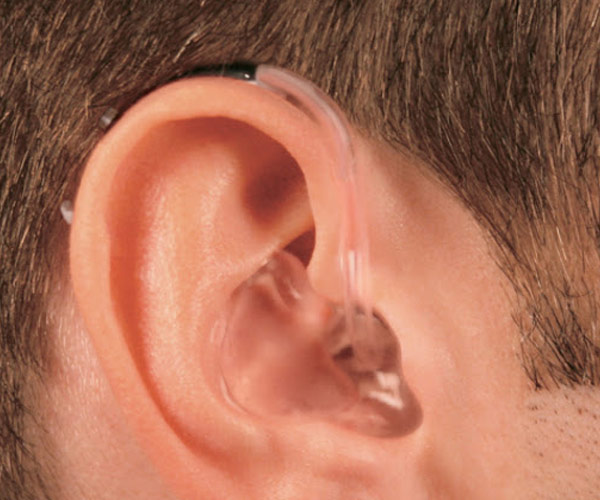
- a manual volume control,
- a programming button,
- a telecoil and wireless connections,
- use larger batteries for longer life,
- directional microphones,
- Bluetooth capabilities.
Behind the ear
A Behind the Ear (BTE) hearing aid is a device that literally sits behind the ear and attaches to an earmold with an acoustic hook. The unit that sits behind the ear is the body of the hearing devices and contains all the hearing aid components. In order to deliver sound directly into the ear, this devices has a tube connecting the ear hook on the hearing aid to the earmold that sits inside the person’s ear. The tubing does need to be changed every 6 to 12 months (on average) as it hardens and can shrink which changes the fit. This type of hearing aid is the most flexible in the wide range of hearing loss it can fit, has an option for a large battery, has a telecoil, directional microphones, and options for volume control and program button. Due to the size and visibility of the hearing aid, this type of device is typically only used for severe-to-profound hearing losses.
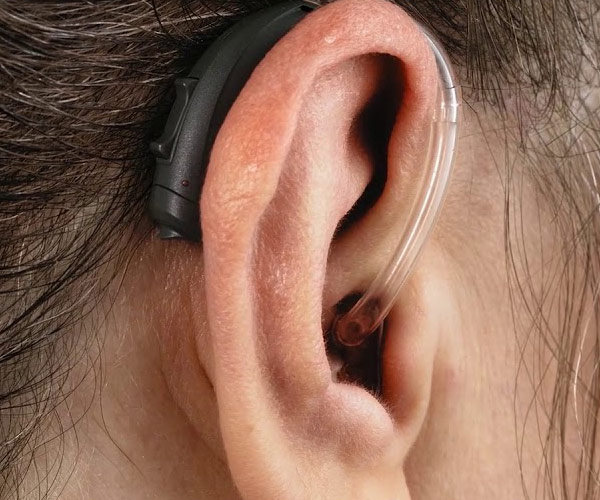
Receiver in canal or receiver in the ear
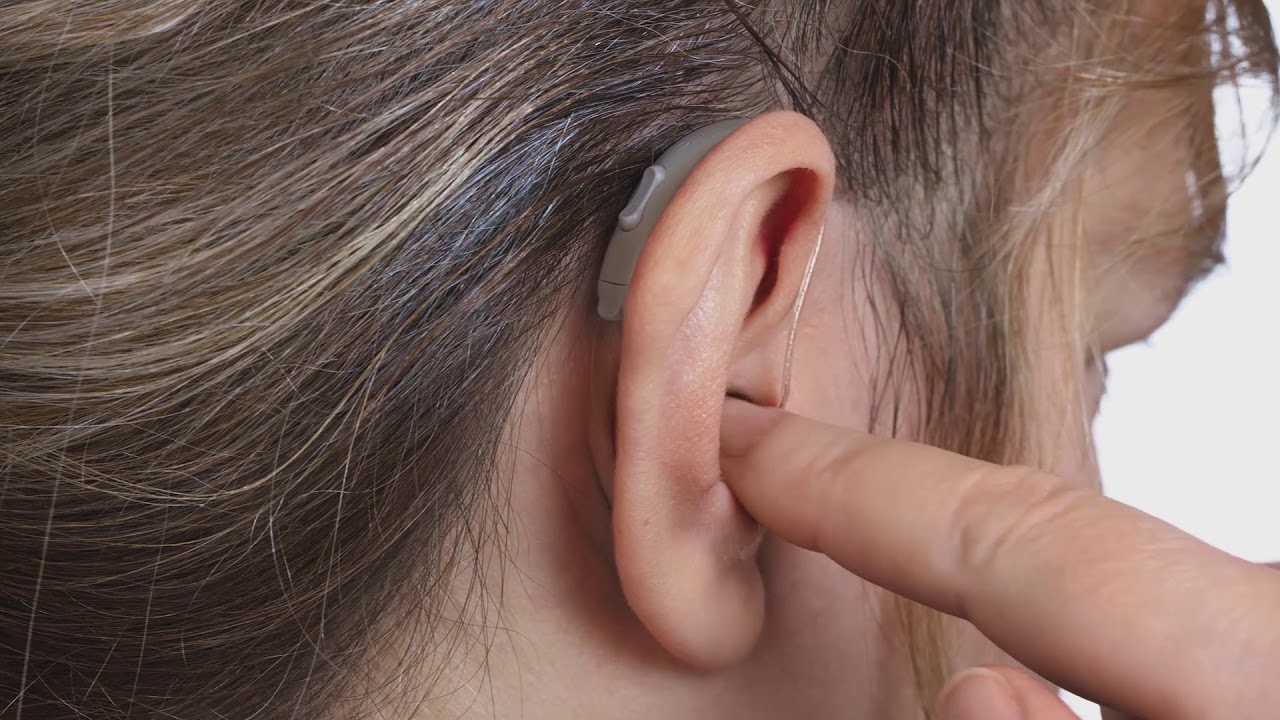
Receiver in the Canal (RIC) or Receiver in the Ear (RITE) are describing the same type of hearing aid. The portion of the hearing aid that contains the microphones, battery, and digital chip, sits behind your ear, and the speaker of the hearing aid sits in the ear canal. These two portions are connected by a very thin wire. The speaker that is in the canal is either surrounded by a silicone dome or a custom tip. The domes come in many different styles and sizes, and the style and size are depended upon the acoustic needs of your hearing loss and ear canal anatomy. Due to its smaller size and nearly-invisible wire, this type of hearing aid is less visible than a BTE hearing device. This type of hearing instrument works well for high-frequency hearing losses because it allows for an open fit, but also can fit many types of hearing losses due to the variety of speaker and dome sizes.
Open fit

Open fit refers to when a RIC or RITE style hearing device is fit but the ear canal is left mostly open. This type of fit is appropriate for people who have hearing loss in the high frequencies, but normal, or near-normal, hearing in the low frequencies. The ear canal is left as open as possible to let low frequencies to enter into your ear canal naturally, while the speaker is still amplifying the mid-to-high frequencies.
Additional Features
*Directional microphones: When there are two or more microphones in the hearing aid, the hearing aid is better able to tell the circuit what sound is coming from the front, the side, and behind the listener. The use of the directional microphone feature helps the listener hear the speaker better in noise. It cannot eliminate background noise but rather focuses in front of the listener for optimal speech understanding.
*Volume control; Some hearing aids have the option to have a volume control on the device. The most common types of volume controls are volume wheels or switches. This control allows the user to turn up, or turn down the volume of the hearing instrument when needed.
*Remote Microphones: Hearing aids are able to wirelessly connect to a small microphone that can be worn by a speaker. This remote microphone picks up the speaker’s voice and transmits the sound into the hearing aids directly. Since the microphone is positioned close to the person’s mouth (think of a lapel mic on a TV Newscaster) it allows the hearing aid user to hear the speaker well, even in noisy situations. A remote microphone is a great option for any hearing aid user who has difficulty hearing in noise.
*Direct to smartphone; This term refers to the ability that a hearing aid has to connect, and stream media from a smartphone. Commonly RIC and RITE devices will have this feature. Most hearing instruments have the ability to connect directly to iPhones, and a few can even connect directly to Androids. The ability for the hearing instrument to connect directly to a phone allows for phone calls, music, audiobooks, etc. to be streamed into both hearing instruments.
*Telecoils; Telecoil is a feature in a hearing all that allows the hearing aid to pick up sound from an audio induction loop. Many churches and theatres will “loop” their auditorium with copper wire, so their sound system can transmit the signal directly into people’s hearing aids.
*Rechargeable Batteries: In the past, all hearing aids were powered by disposable batteries that had to be changed out ever 4-10 days, depending on the battery size. Now, RITE, RIC, BTE hearing instruments have the option to be powered by rechargeable batteries. Instead of changing out the battery of the hearing instruments when the battery dies, the user places their hearing aids in a docking station every night to recharge their batteries. The average battery life for a hearing aid with rechargeable batteries in between 20-30 hours.
What to know before you buy
Before purchasing hearing aids it is important to know the type and degree of your hearing loss. This can be determined by getting a comprehensive hearing evaluation from an audiologist. A complete diagnostic test by an audiologist is extremely important in fitting the appropriate hearing aid. After the evaluation, the audiologist will be able to recommend acoustically appropriate hearing devices for you.
Why you should be fitted by an audiologist
A Master’s in Audiology, or a Doctorate in Audiology is now required to be an audiologist. Audiologists are extensively training in diagnostic testing, and are the most qualified professionals to evaluate hearing and diagnosis hearing loss. Due to the in-depth understanding of the auditory system and it’s impairments, audiologists are uniquely qualified to fit hearing devices. Audiologists also follow standards, commonly referred to as Best Practices, and will use their expertise in Real Ear Measurements when fitting hearing instruments.
FAQs
The best hearing aid on the market today?
What is the average cost of hearing aids?
The cost of hearing technology can vary greatly depending on the level of technology inside of the hearing instrument and the place of purchase. Less expensive hearing aids will have fewer features (fewer frequency bands, less noise filtering, slower sound processing). Big Box stores will offer a discount on hearing technology, but the customer can expect limited or reduced services. Typically, at an audiology practice, a pair of hearing instruments will cost anywhere between $3000-$7000.
